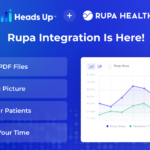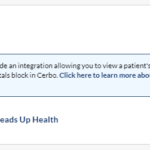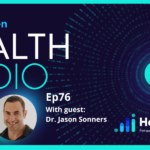At this point in life you probably know that body mass index (BMI) is used as one indicator of whether or not you’re “healthy.” There’s always controversy around it.
Is body mass index truly a good indicator for health?
What if I have a lot of muscle?
What if I’m pregnant?
How’s my doctor going to tell me my BMI is too high when he/she looks like they have their own higher-end BMI?
Ifs, ands and buts aside, BMI is just an indicator; a mark in the road to tell you approximately where you are in your health, although it’s not the end-all, be-all health indicator. Like many healthcare analytics, it’s actually only one piece of your health puzzle. It’s just one transaction to keep track of in your health bank account.
BMI, coupled with your weight and body fat percentage, will give you a good idea of your body composition.
Once you understand your body composition, you’ll understand how you can improve your body so it’s at a healthy level of fat and the other components. But first, you need to track your BMI, body fat and weight.
We designed Heads Up Health to integrate your BMI, body fat and weight data from a variety of different trackers, including Apple Health and Fitbit Aria, plus it has the capability to accept manual entries. If you’re already tracking this data, or you’re about to start, register for the beta launch of Heads Up Health. Until then, here’s the skinny on body composition and what all those healthcare analytics really mean:
Weight
- What it is: The last few decades have made weighing yourself something you can do in the privacy of your very own bathroom. Your weight is how much all of you — fat, lean muscle and tissue, bones, that spaghetti you just had for dinner, your jeans, your jewelry — weighs altogether. It’s one of the easiest healthcare analytics to track to know if you’re within the range of being healthy or if you need to make some healthy life changes.
- Why you should care: Research has shown that people who regularly weigh themselves do better when it comes to weight loss progress and success.
BMI
- What it is: BMI is a measure of body fat based on height and weight. So yes, it is possible for someone to be outside of a normal BMI and still be healthy and not at risk of developing disease because it doesn’t take into account muscle weight versus fat weight.
- Why you should care: A high BMI can be an indicator of high body fat, which can lead to health problems. Tracking your BMI is an easy way to spot a red flag when it comes to your health — so you can make changes sooner rather than later.
If you’re a Heads Up Health user, your BMI is auto calculated based on your height (in your profile) and the weight you manually enter or that’s imported from one of your apps or devices.
Body Fat
- What it is: Body fat takes into consideration your body size, weight and height. The basic way to find it is to measure your waist, wrist, hip and forearm and enter it into a body fat calculator. Other ways to find body fat include:
- Body Fat Scale – this is similar to a regular scale, but it can also measure body fat. This scale sends a small electrical current into your foot and, because fat is a poor conductor of electricity, your body fat can be measured. Fitbit makes a body fat scale called, Aria, which is integrated with Heads Up Health. If you use Aria, or any Fitbit, just sync it up and add it to your dashboard on Heads Up Health.
- Caliper – using this method, you’ll need the caliper (a device that “pinches” your flesh) and another person to do the test and plug it into one of the various caliper formulas.
- DEXA – considered to the most accurate method, this works by radiation passing through your body, and getting an x-ray that will show what’s fat, what’s lean muscle and what’s bone in your body.
-
Hydrostatic – a.k.a. “underwater weighing,” this method requires you to get in a big tub of water, and your body density and body fat are measured based on the amount of water you displace.
- Why you should care: Especially if you’re losing weight. Keeping track of this healthcare analytic can help you understand what’s going on if your scale isn’t budging; it’s possible you’re losing fat and gaining muscle, and it’s just not showing on your scale.You can easily keep track of this in Heads Up Health. It’s a straight-forward manual entry based off of any of the methods listed above.
Heads Up Health Recommendations
- Wireless scales: These scales connect to your wifi network at home and can automatically update your weight, body fat and BMI in your Heads Up account without requiring manual entry. We recommend the Fitbit Aria or the Withings Smart Body Analyzer.
- Manual scales: If you have a perfectly good scale at home or prefer to avoid the cost and complexity of wireless models, you can use any old scale you want. Just enter your weight and body fat readings manually into your Heads Up account. We’ve found the Tanita BF679W to be a highly accurate scale for measuring weight and body fat at a very reasonable price.
Your body composition is yours to monitor and your health is yours to take care of, so monitoring these healthcare analytics can pay off in the long run. If you’re interested in tracking your body composition data, and seeing how it affects your other healthcare analytics — blood pressure, cholesterol, glucose — sign up for the beta version of Health Up Health. Or, if you’re just interested in staying up-to-date with the latest healthcare, fitness and wellness trends, follow us on Twitter or Facebook.














Your enthusiasm for tracking body composition is well-placed. But you do not go far enough in that you do not specify optimal or even healthy body composition ranges for both men and women (which are different). Without a credible target, the measurement is useless.
Further, there are no gym-actionable tracking methods beyond DEXA or MRI (which you do not mention) with the possible exception of Bodpod which has marginal accuracy. All other methods are so inaccurate as to be grossly misleading and little more than scams and SHOULD NOT be supported or promoted. Further information on request.